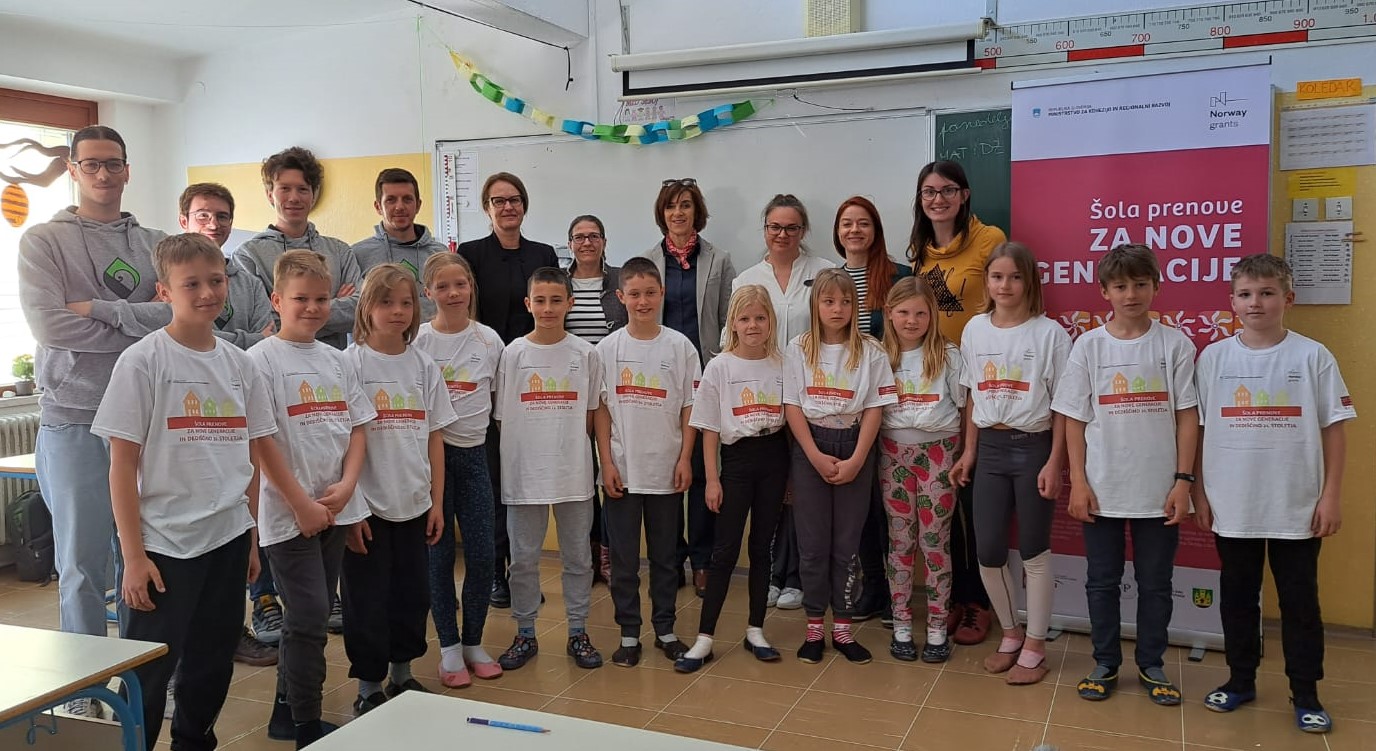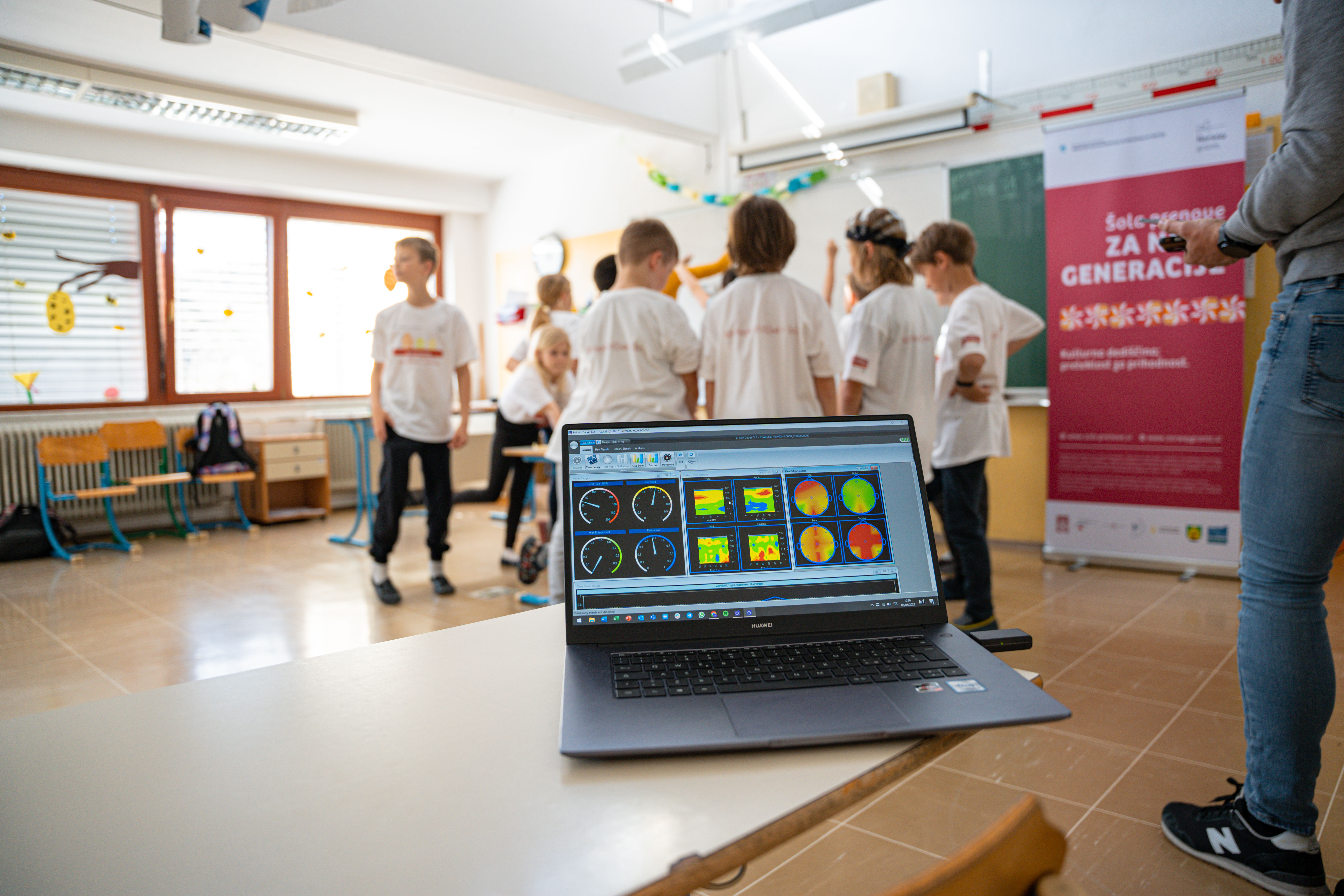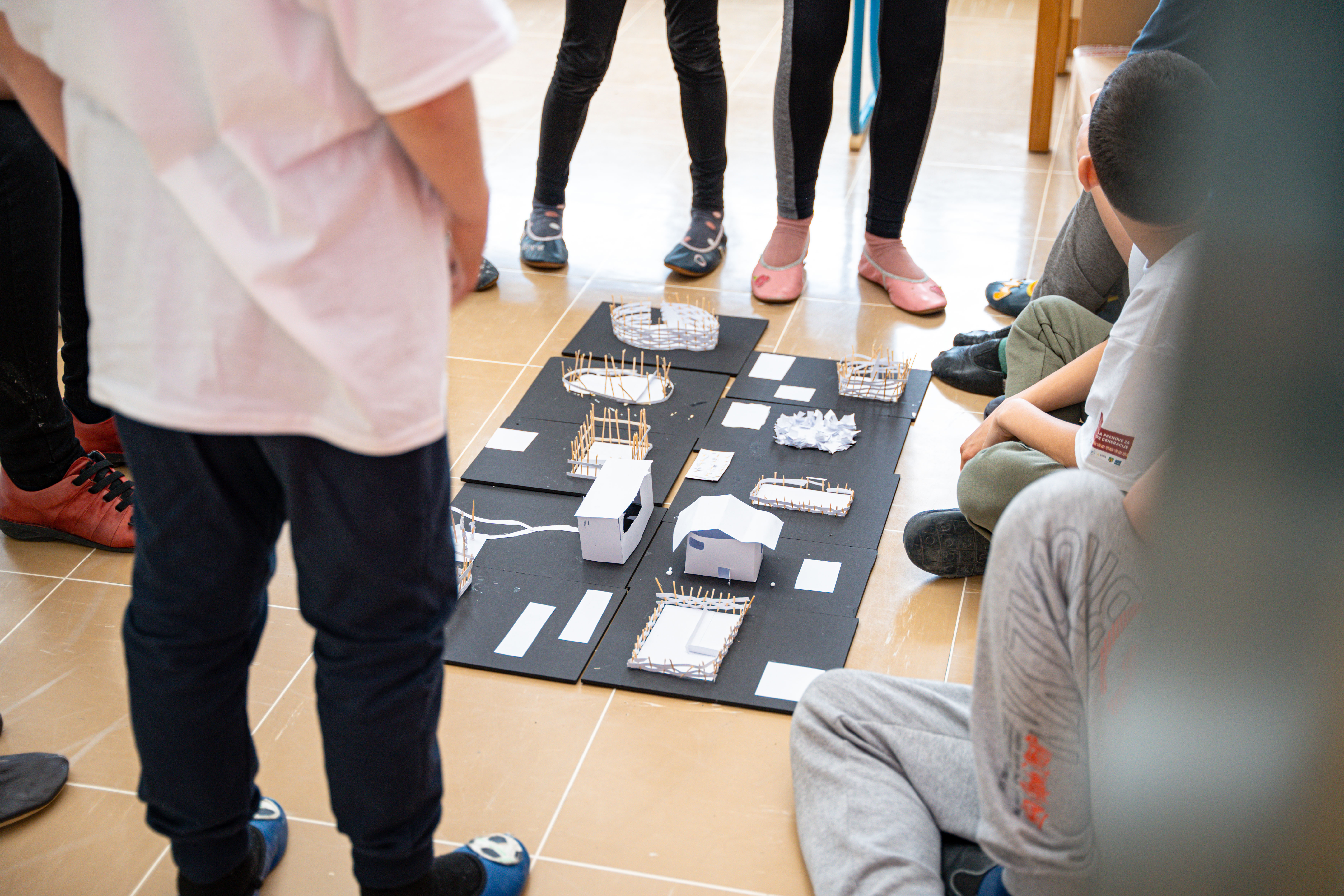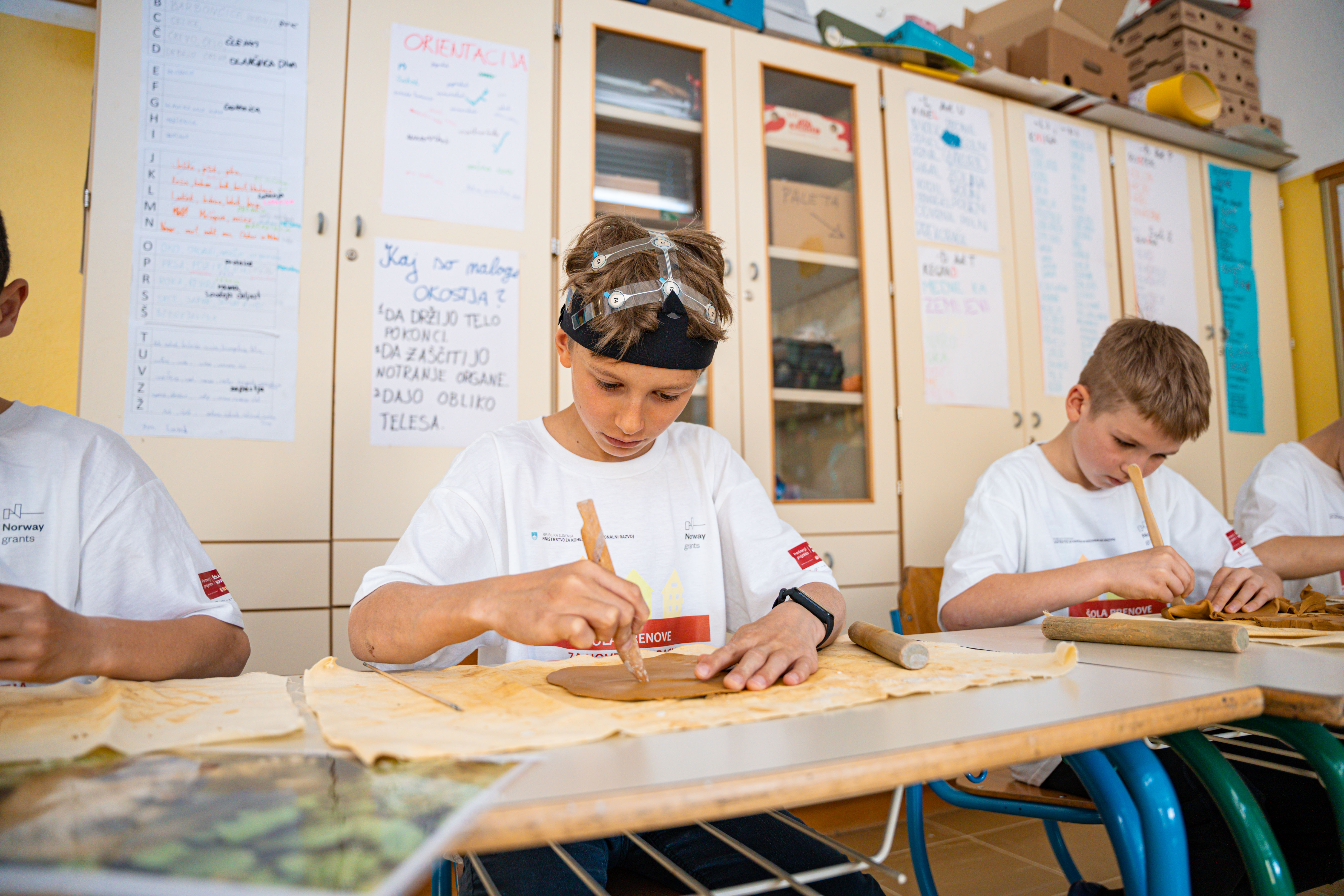
7 April 2023 – Within the project Heritage School for the New Generations, on Monday, April 3, 2023 and Tuesday, April 4, 2023, a neurological testing was conducted among the 4th grade pupils during art classes at the Ivan Grohar Elementary School in Škofja Loka. The non-invasive testing recorded and compared in an innovative way, the emotional and cognitive response of children while studying regular material according to the existing curriculum versus the new lecture in the field of local cultural heritage.
Through testing, the cognitive response in the perception and processing of stimuli was measured using techniques specific to applied neuroscience to investigate the experiences of a group of pupils during different teaching methods. Information about the lived experience was obtained directly from the pupils, using the so-called electroencephalogram (EEG), which records the electrical activity produced by the brain to obtain information with high temporal precision. The prepared measurements were intended to observe changes at the level of: cognitive load, attention, degree of involvement and perceived well-being during the planned activities.

The testing took place in two parts, the first day was dedicated to testing the children during the regular school hour of art lessons; the second day was dedicated to the implementation of the school lesson according to the curriculum, but enriched with elements of cultural heritage. The experts of the Institute for the protection of cultural heritage of Slovenia have prepared a new teaching lesson for the subject of art lessons in such a way that the content of the lesson was given through the aspect and examples of cultural heritage from the local area. The lesson was prepared on the topic of the habitat of animals throughout the past, which the students interpreted in the field of architecture.

On the first day of testing, Italian neuroscientist Andrea Bariselli explained to the pupils how the brain works, what are the measuring devices and what is being measured. The measurement was completely non-invasive; the devices recorded brain wave responses as was explained to pupils by Andrea Bariselli » measuring is like placing the microphone in the middle of the football stadium«. The topic of how the brain works was very interesting to the children; with great interest, they most often asked what happens to the brain during sleep, do we always dream, why do we wake up at the same time, does the brain sometimes rest, etc. The testing itself took place in an efficient and fun way for the children and did not hinder them from following the lesson, as the main device (EEG) was easily moved between the students. The same testing took place in the month of March with 4th grade students at a primary school in Norway in both outdoors and indoors.

Testing of pupils during pilot implementation of the lesson with elements of cultural heritage was organized within the project Heritage School for the New Generations, funded under the Norway grants, with the participation of the partner organizations; Ivan Grohar Elementary School; Institute for the Protection of Cultural Heritage of Slovenia, University of Primorska – Faculty of Humanities; School Center Škofja Loka – Secondary School of Wood Engineering, Municipality of Škofja Loka, Norwegian partner Magma Geopark AS and the Association of Historic Towns of Slovenia acting as the project promoter.
The project, which brings cultural heritage closer not only to pupils, but also to teachers, aims to use a scientific basis to determine the conditions and methods for better understanding and learning of compulsory school curriculum through the inclusion of nature and cultural heritage in lessons. And also, to justify through the testing that learning in this manner is more interesting, meaningful and motivational. This kind of approach also encourages innovative teaching methods that benefit the teacher-student relationship. It improves the quality of education and at the same time directly encourages and contributes to the preservation of our natural and cultural heritage. The inclusion of innovative teaching methods that introduce elements of cultural heritage and traditional skills and knowledge for its renewal, both in the classroom and in nature, can significantly contribute to the improvement of the learning process itself.